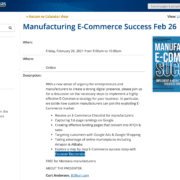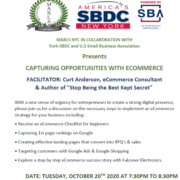E-Commerce Success Starts with Great Content
An effective e-commerce approach ends at the point of sale. But it begins with driving traffic to your e-commerce site. But how do you do that if potential customers have never heard of your product, or more importantly, if they don’t even know there is a solution to their problem?
That’s where your digital marketing comes in. And the backbone of it will be great content.
Content drives all your marketing efforts — online advertising, search engine optimization, offline advertising too. But to get your head around how it works, think of the marketing content you create as a “Digital Twin” of your salesperson.
Use content to create a “Digital Twin” of your sales team
In manufacturing, a Digital Twin is a digital re-creation of a product or a process. It’s used in prototyping new equipment, or testing different types of materials or altered processes.
With a Digital Twin manufacturing marketing approach, your content will be like an online version of a salesperson.
At its core, the approach adheres to the age-old sales maxim: People will only do business with you if they know you, like you, and trust you.
The idea with the Digital Twin approach is to create website content to achieve those goals:
Know you. This is top-of-the-sales-funnel content that addresses people’s problems. This answers their problems up front, as they may not even be aware of the solution. Think of an article titled “10 Ways to Publicize Your E-Commerce Product Beyond SEO.”
Like you. Now that someone has read your article or seen your video, and they know of you, get them to like you by following up your advice with a tool that will help them.
An online calculator that can perform some sort of function is ideal (think mortgage calculator). You can also provide an in-depth online guide to answer their questions.
A product configurator would also be ideal here, but that’s usually tied in more with the direct sales page.
Trust you. After they’ve downloaded a tool, and they’ve read more of your content and learned more about you, serve them up some content that establishes trust.
There’s no better tool than the case study. Show them the results they can achieve, and prove to them that you’ve delivered before. (Here’s our guide on how to write an effective case study.)
“Trust you” is also what you serve up on your product page, which is where you’re selling your products. It should include a benefits-forward, data-backed explanation of how your product will improve your potential customer’s life.
We’ve sketched out the right places in the sales funnel to position your content. But how do you know exactly what to write about? If you want marketing content that will aid in the sale of a product, there’s only one place to start: The sale itself.
Working Your Way Backwards
Great content requires research to find out what types of content your customers truly want and why they buy. Here are four ways to gain those valuable insights:
- Sales and operations team interviews
- Customer interviews
- Keyword research
- Competitor research
These are guerilla tactics, and they take time, not budget. Let’s break down why each of these is so critical.
Sales and operations team interviews. Start out by interviewing your sales and operations team.
Your sales team is the next closest thing to your customers, and they have remarkable insights about what your customers’ interests are and what makes them buy. They’ve actually done a lot of the research for you. They’ve tried out a number of different approaches, and likely have narrowed it down to what works best.
They may have some insights for Know You, Like You content, but they will definitely have language that should be used on your product pages to get the customers to buy. I love the questions David P. Fisher suggests you ask your sales team:
- What stories are you telling prospects right now?
- What has been your biggest win lately?
- Why have you heard “no” recently?
But don’t stop with your sales team. Your operations and design team should be part of the research process, as manufacturing operations guru Ray Ziganto pointed out to me. Who knows the inherent value of the product better than the engineers and technicians who developed it?
As Ray notes, “Ask them how they would sell it.” Their answers might surprise you, and will definitely add some incredible insights.
Customer interviews. Now that your sales team has given you some insights, validate their suggestions and uncover new insights with our “guerilla research” methodology.
Conduct a one-on-one interview with three of your top prospects. Spend thirty minutes probing why they purchased, what it is about the product they like, and why they chose your company. Test out your sales team suggestions. Are they accurate?
Also, find out what your customers’ bigger issues are. What challenges do they face in their day-to-day jobs? Your solution is one piece of the puzzle. What other obstacles do they face? What are their macro-pain points?
From these results, look for overall trends in the responses, as well as hot-button keywords. Line up topics and keywords in a “Seed Keywords” spreadsheet.
Keyword research. Now that you’ve uncovered and validated topics, it’s time to see if there is Internet search volume for these items.
There definitely should be some search volume around your product or service. But keyword research will also tell you how the customer population at large feels about some of those Know You, Like You topics.
Keyword research is market research. It will give you an indication of just how popular these topics truly are, and if you should create content around them.
Competitor research. Oh yeah, them. Your competitors may have cracked the code as to what is working with customers. So plunder info from their websites.
You can use a Search Engine Optimization tool like SEMrush to run a quick report on the competition. Just sign up for a basic level subscription, and type their URL into Domain Overview. You’ll find out what keywords they rank for. But don’t stop there.
Check out the type of web content they’re publishing. If they’re good, you’ll see recurring themes and content areas that get a lot of emphasis. These can spark some ideas of your own.
Content + Marketing = The Digital Twin
If a salesperson is armed with a great sales pitch and tremendous collateral, their work doesn’t end there.
They have to get out and make contact with people. We refer to this as “content distribution.” It’s really the marketing of your content, and you need to do that too.
There are many tactics for marketing / distributing your content. They include:
- Search engine optimization (SEO). Optimizing your online content so it can be found by search engines.
- Guest blogging: Sharing your content on other blogs and websites (like this one).
- Social media. Using social media to share your content and share with other influencers.
- Paid advertising. Boosting your content through paid placement.
This will take a bit of experimentation and analysis of your metrics to determine which method works the best. But you must distribute that content for it to be read.
You’re on Your Way
If you’re engaging in e-commerce, you’ve taken an enormous step forward to creating your own Digital Twin. Kudos to you for starting at the smartest place — the bottom of the sales funnel.
It’s forward-thinking to start with the bottom of the sales funnel. Heck, where else would a sales-driven organization start?
But now let’s work our way backwards and start building content that can help encourage people to Know You, Like You and Trust You. Create that Digital Twin, and put it out there to start producing traffic, leads and customers.
Feel free to check out our complete Digital Twin Manufacturing Marketing approach!

Greg Mischio is the Owner and Founder of Winbound, a marketing agency that provides content marketing for small marketing departments with a focus on manufacturing and industrial verticals. Winbound provides a content + marketing approach, creating content that’s mapped to the customer journey and marketing for distribution via search, social and niche-based paid advertising. Winbound’s clients have enjoyed double and triple digit increases in traffic and leads.


















Leave a Reply
Want to join the discussion?Feel free to contribute!